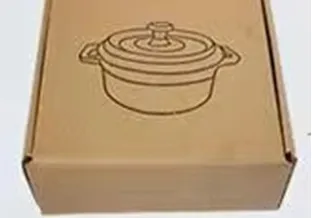
can you re enamel a cast iron pot
Enameling a cast iron pot is a fascinating process that combines artistry with functionality, enhancing the aesthetic appeal of cookware while also improving its performance. For anyone looking to revive an old cast iron pot, or to personalize a new one, there's much to learn about the enameling process.
Understanding Cast Iron and Enamel
Cast iron cookware has been a staple in kitchens for centuries, valued for its excellent heat retention and even cooking capabilities. However, bare cast iron can be prone to rust and requires seasoning to maintain its non-stick qualities. This is where enamel comes in. Enamel is a glass-like coating that is fused to metal at high temperatures, usually offering a variety of colors and finishes. It protects the underlying metal from rust and makes cleaning significantly easier.
The Benefits of Enameling
1. Rust Resistance Enamel creates a barrier that prevents moisture from reaching the iron, effectively eliminating the risk of rust. 2. Ease of Cleaning Unlike seasoned cast iron, enameled surfaces can often be cleaned with soap and water, making maintenance less cumbersome.
3. Versatility Enameled pots can be used across various cooking methods, including oven, stovetop, and even direct flame cooking, depending on the type of enamel used.
4. Aesthetic Appeal The vibrant colors and glossy finish of enameled cast iron make it an attractive option for kitchen use and display. You can choose a color that matches your kitchen decor or even create a unique pattern.
The Enameling Process
The enameling process for cast iron involves several steps
1. Preparation of the Pot If you have an old cast iron pot, it’s important to prepare it for enameling. This might involve thorough cleaning, removing any rust or old seasoning, and ensuring the surface is smooth. Sandblasting is one method that can be used to prepare the pot by creating a clean and roughened surface for better adhesion of the enamel.
can you re enamel a cast iron pot

2. Application of the Enamel The enamel is typically applied in powder form. It is either sprayed on or dipped, depending on the desired finish. The pot is then usually spun in a centrifuge to ensure an even coat.
3. Firing The coated pot is fired in a kiln at high temperatures, which causes the enamel to melt and fuse to the cast iron. This step is crucial as the temperature and duration of firing can significantly affect the quality of the enamel finish.
4. Cooling After firing, the pot must cool slowly to avoid cracking or chipping the enamel. Proper cooling ensures that the enamel has fully adhered to the metal.
5. Finishing Touches Once cooled, the pot can be polished or have additional layers of enamel applied for more color or protective properties.
Can You Re-Enamel?
Re-enameling an old cast iron pot is possible, and many artisans specialize in this process. However, it’s essential to consider the quality of the original pot. If the cast iron itself is compromised—cracked or warped—it may be better to invest in a new piece rather than attempting to re-enamel it.
For those who prefer a DIY approach, there are kits available that allow for home enameling. These kits include enamel powder and detailed instructions, making it accessible for those who want to personalize their cookware or restore a family heirloom.
Conclusion
Re-enameling a cast iron pot can breathe new life into an old piece or allow for the creation of a unique, personalized item. The benefits of enameling—such as improved rust resistance and ease of cleaning—make it an appealing option for many home cooks. Whether you choose to take on the project yourself or seek a professional's help, the result is a beautiful and functional piece that can enhance your culinary adventures for years to come. Embracing the process of enameling not only rejuvenates your cast iron but also adds a personal touch to your kitchen.
-
Premium Deep Cast Iron Pan – Versatile Enameled & Grill Options, Perfect for Frying and SaucesNewsJun.10,2025
-
Chipped Enamel Dutch Oven – Durable & Stylish Kitchen Essential for Even CookingNewsJun.10,2025
-
Best Cast Iron Cookware Set Sale Durable Pots & Woks DealsNewsJun.09,2025
-
Hanging Dutch Oven Oven Safe & Lid IncludedNewsJun.09,2025
-
16 Inch Dutch Oven - Heavy Duty Cast Iron for Large MealsNewsJun.09,2025
-
Premium Cast Iron Bacon Grill Press - Heavy-Duty & Even HeatingNewsJun.09,2025


